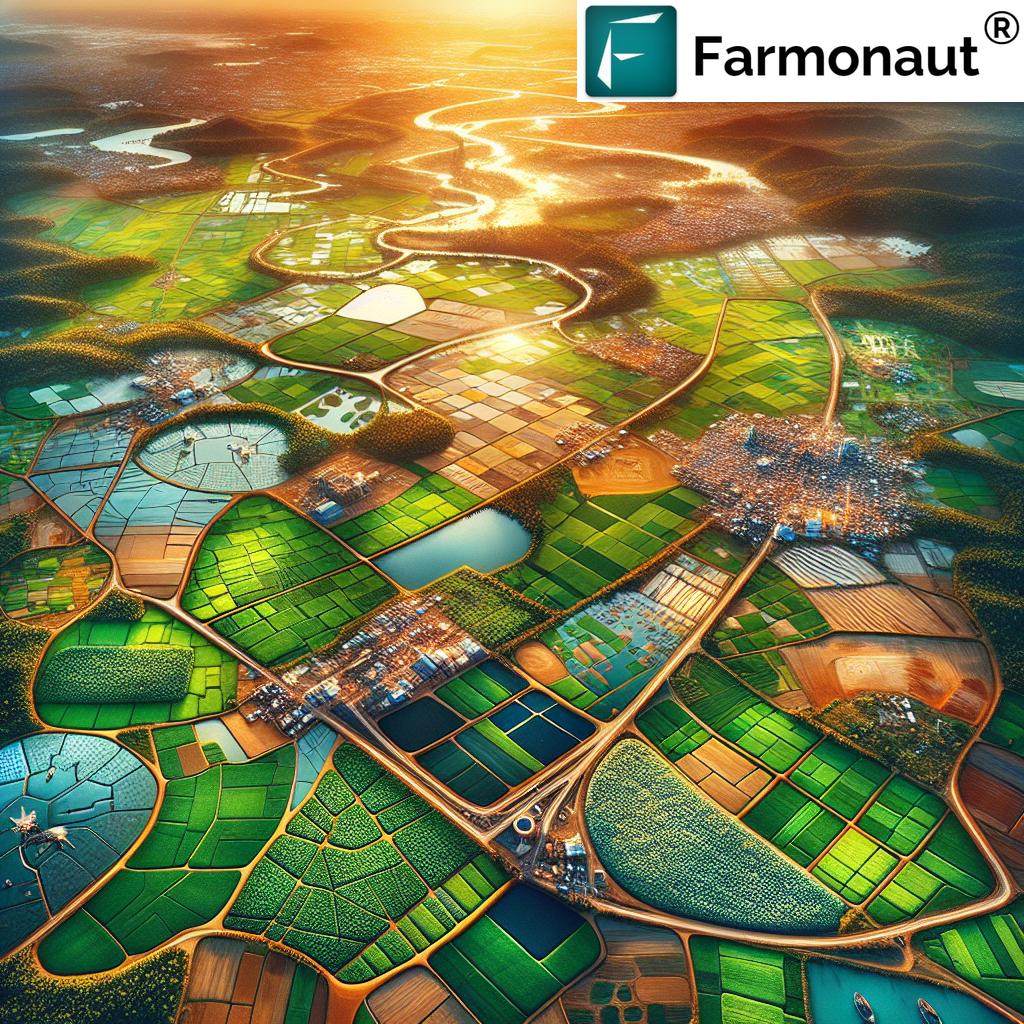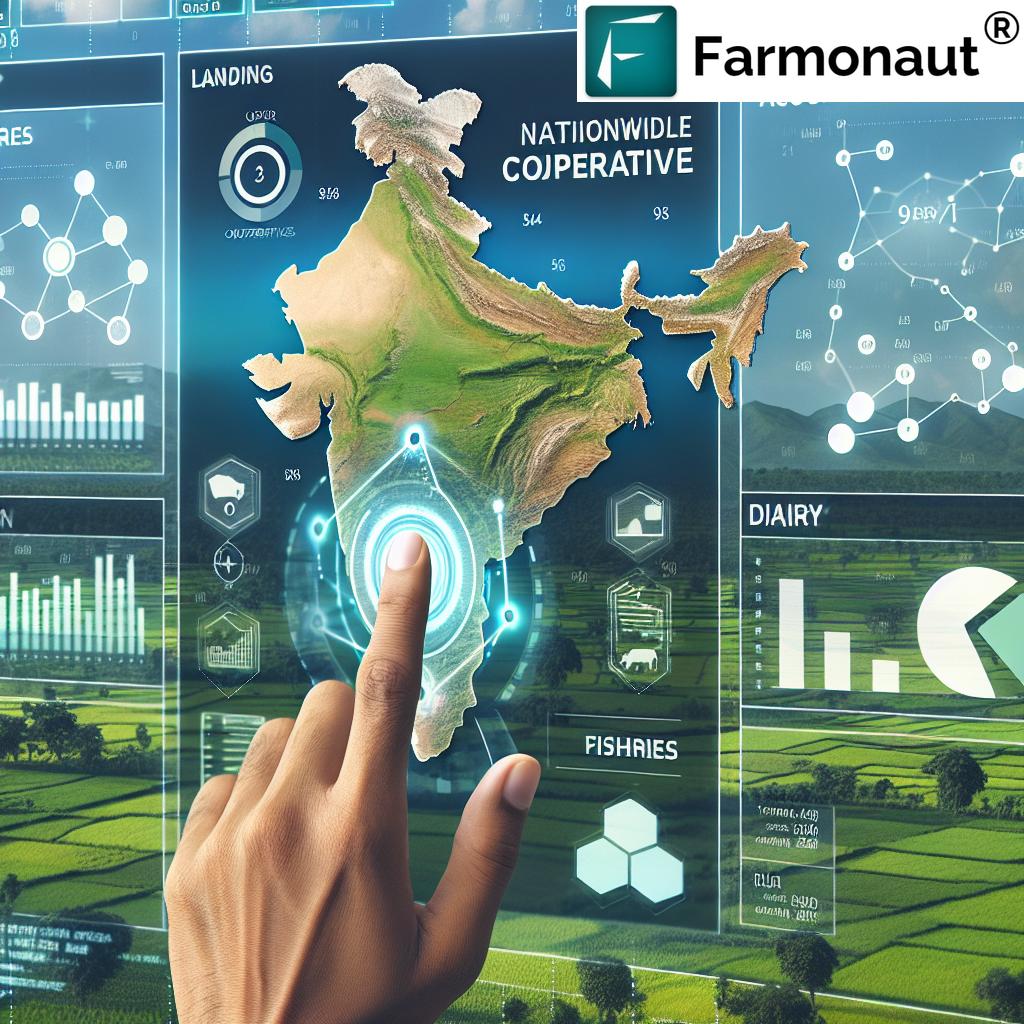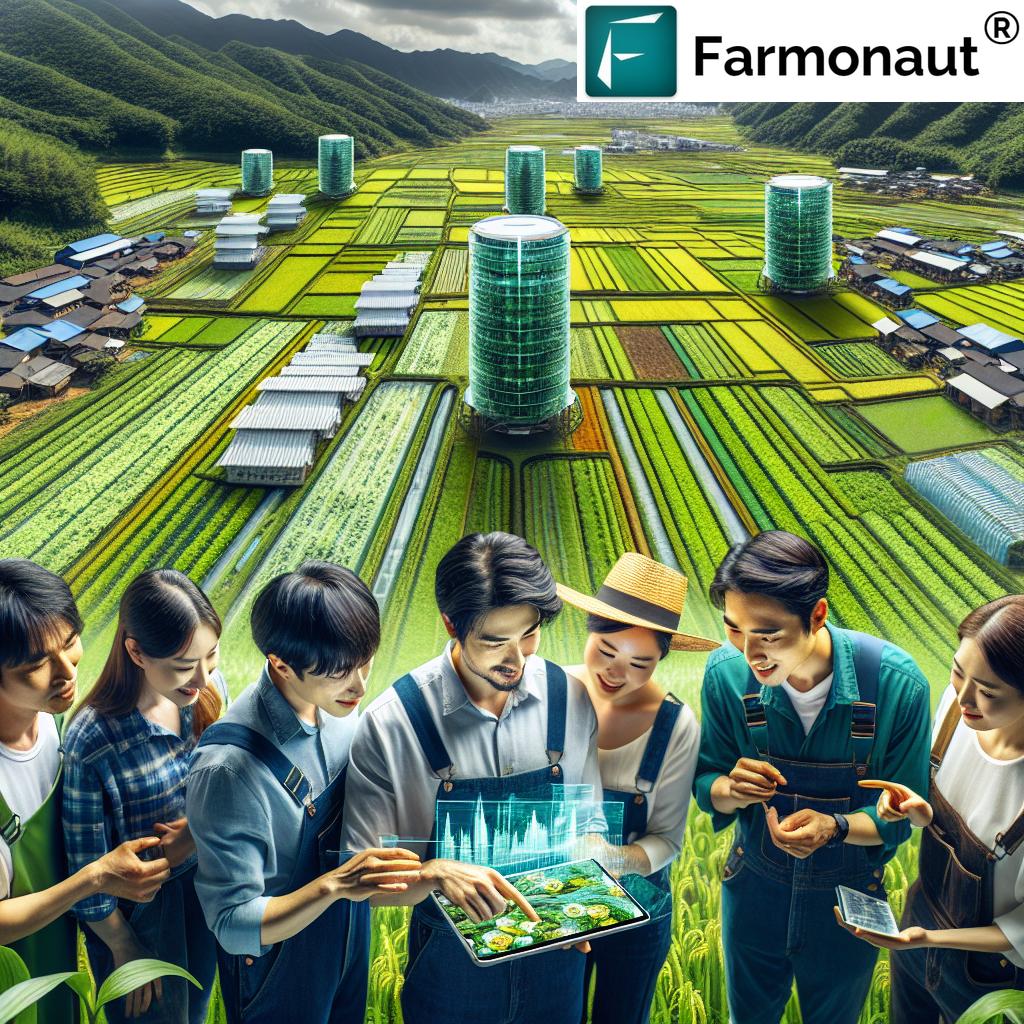Vertical Farming Tower & Tools: India Jobs, Cons 2025
“By 2025, India’s vertical farming tower market is projected to grow at over 25% annually, creating new tech jobs.”
Table of Contents
- Introduction: Vertical Farming in India 2025
- What is Vertical Farming?
- Vertical Farming Towers: The Structural Backbone
- Advanced Vertical Farming Tools & Technologies
- Vertical Farming Jobs & Opportunities in India
- Vertical Farming Towers & Tools: India 2025 – Key Aspects (Table)
- Sustainability Impact & Environmental Cons
- Cons of Vertical Farming: Cost, Energy, Adoption
- Farmonaut’s Role in Advancing Indian Vertical Farming
- 2025 Outlook: Future Innovations & Integration
- Frequently Asked Questions (FAQ)
- Farmonaut Subscription Plans
- Conclusion: Revolutionizing Indian Agriculture
Introduction: Vertical Farming in India 2025
India is rapidly embracing next-generation agriculture practices to feed its burgeoning population, with vertical farming tower systems and vertical farming tools at the forefront of this transformation. By 2025, these vertical solutions are revolutionizing how we grow food in urban environments, offering sustainable and resource-efficient alternatives to traditional farming.
The adoption of vertical farming in India is not just a matter of innovation; it’s a response to critical challenges like limited arable land, water scarcity, and increasing crop demand due to urbanization and population growth.
- The market for vertical farming towers in India is exploding thanks to their ability to maximize space and minimize external dependencies.
- Advanced farming tools and technologies (think IoT, AI, automation) are optimizing crop growth and resource use in controlled environments.
- With these changes, jobs in vertical farming are becoming more specialized, offering new roles in agri-tech, operations, data analysis, and environmental management.
This comprehensive guide addresses the backbone, benefits, cons and job opportunities arising from vertical farming towers and the tools driving growth in the Indian agricultural sector by 2025.
What is Vertical Farming?
Vertical farming refers to the practice of cultivating crops within controlled environments, stacking layers vertically rather than spreading horizontally. Typically these towers use:
- Hydroponics (soil-less systems using nutrient-rich water)
- Aeroponics (misting roots suspended in air with nutrients)
- Aquaponics (combined fish and plant systems, cycling nutrients organically)
This method allows year-round production, reduced land use, greater crop density, and optimized resource efficiency. The entire process is monitored and managed inside controlled environments, tightly regulating humidity, light, temperature, CO2, and nutrient delivery.
As urbanization rapidly reduces cultivable land across cities like Delhi, Mumbai, and Bengaluru, and monsoon dependencies impact food security, vertical farming in India is emerging as an innovative solution to address the country’s unique agricultural challenges.
“Advanced tools in Indian vertical farms can increase crop yield by up to 40% compared to traditional methods.”
Vertical Farming Tower: India’s Structural Backbone for Future Agriculture
The vertical farming tower stands as the structural backbone of this agricultural revolution. Instead of growing crops horizontally across expansive farmland, these towers maximize space by stacking multiple layers vertically, often inside compact, modular structures.
How Vertical Farming Towers Work
- Stacked Crop Layers: Crops are positioned in trays or holders arranged vertically.
- Climate Control: Advanced technologies maintain optimal temperature and humidity.
- LED Grow Lights: Energy-efficient lighting simulates natural sunlight for each crop layer.
- Automated Watering: IoT systems precisely manage watering, reducing water use and improving growth.
- Isolation from External Threats: Enclosed environments mitigate risks from pests, disease, and weather events.

In Indian cities, vertical farming towers empower farmers and entrepreneurs to produce fresh vegetables, herbs, and fruits within city limits, shrinking the distance from farm to fork (reducing food miles).
- They are often modular, scalable, and can be set up on rooftops, under-utilized urban lots, and controlled environments inside warehouses.
- LED lighting and automated climate control optimize photosynthesis and plant metabolic processes year-round.
- These towers reduce dependency on traditional farmland and mitigate risks from India’s erratic monsoon, soil degradation, and climate challenges.
With these features, the vertical farming tower is poised to transform India’s agricultural landscape by 2025.
Advanced Vertical Farming Tools & Technologies Driving India’s Growth
Next-gen vertical farming tools are the engine behind resource efficiency in vertical farming in India. Let’s explore the automation, sensors, software, and resource management solutions now available or soon to become mainstream by 2025.
Key Advanced Tools in Vertical Farming
- IoT-Enabled Sensors: Monitor temperature, humidity, CO2, water, and nutrient levels in real time. These sensors ensure optimal growth for every crop stacked in the tower.
- Automation Robotics: Robotic arms automate planting, maintenance, pest management, and harvesting, reducing labor costs and human error.
- AI-Based Analytics Platforms: Predict crop cycles, perform yield estimation, and manage resource use dynamically for highest production efficiency.
- LED Grow Lights: Adjustable light spectrums synchronize with crop needs, simulating daylight to boost photosynthesis and reduce energy waste.
- Automated Irrigation Systems: Deliver precise quantities of water to vertical farming tower layers, drastically reducing water use—up to 90% less vs. traditional farming methods.
- Satellite-Based Crop Monitoring: Companies like Farmonaut offer carbon footprint tracking, real-time field health insights, and AI-based advisory to assist control and resource management in high-tech farms.
Benefits of Using Advanced Tools:
- Increases crop yield and consistency
- Minimizes manual labor and human error
- Optimizes climate control and resource efficiency
- Improves scalability and flexibility for smallholders and urban entrepreneurs
- Enables precise monitoring and maintenance for specialized crops
With the proliferation of vertical farming tools customized for the Indian market, viable and scalable adoption is achievable even for smaller farms in cities and peri-urban regions.
Vertical Farming Jobs & Employment Opportunities in India by 2025
As the vertical farming sector in India expands, it’s creating new job roles that complement both agricultural science and urban technology. The vertical farming jobs ecosystem is expected to provide roles ranging from hands-on operations to advanced agri-tech solutions.
Key Job Roles in Vertical Farming
- Farm Operations Technicians: Manage tower equipment, monitor plant health, and maintain nutrient delivery systems.
- Agricultural Scientists: Research best crop varieties, optimize production protocols, oversee food safety and environmental compliance.
- Automation Specialists & Robotics Engineers: Oversee the installation, calibration, and repair of automated watering, lighting, and harvesting equipment.
- Data Analysts: Utilize platforms like Farmonaut to interpret satellite- and sensor-derived insights for optimizing growth cycles and resource allocation.
- Supply Chain Managers: Coordinate the delivery of fresh produce to local markets and end consumers, minimizing food miles and waste.
- Sustainability & Environmental Managers: Ensure carbon tracking, water-saving, and sustainable practices are embedded in vertical farms.
- Training Professionals: Develop curriculum and provide on-site instruction for newcomers, upskilling the rural and urban workforce.
Vocational training and research programs tailored to vertical farming in India are vital for empowering farmers from both rural and urban backgrounds to comfortably transition into these new roles.
Vertical Farming Towers & Tools: India 2025 – Key Aspects
| Technology/Tool Name | Estimated Cost (INR, 2025) | Expected Job Creation (per 100 towers/tools) |
Sustainability Impact | Main Cons |
|---|---|---|---|---|
| Hydroponic Towers | ₹150,000–₹300,000 | 80–100 | High (90% less water use) | Setup complexity, recurring nutrient cost |
| Aeroponic Towers | ₹200,000–₹400,000 | 90–110 | High (Extreme resource efficiency) | High maintenance, tech dependency |
| Automated Monitoring Systems | ₹80,000–₹200,000 | 60–90 | Medium–High | System integration, training needs |
| LED Grow Lights | ₹30,000–₹70,000 per tower | 10–20 (Installation & repairs) | Medium (energy savings via LEDs) | High power demand; replacement costs |
| AI-Based Analytics Platform | ₹50,000–₹100,000 per license | 15–30 | High (streamlined resource use) | Requires skilled data analysts |
| Automated Irrigation | ₹25,000–₹60,000 per tower | 20–35 | High (minimizes water use & labor) | Calibration & reliability issues |
| Satellite-Based Monitoring (Farmonaut) | ₹5,000–₹25,000 per season | 10–20 | High (enables data-driven farming) | Requires digital literacy, device access |
All costs are estimates for 2025 based on emerging market trends, and job creation numbers reflect direct and indirect employment around installation, operations, and maintenance of vertical farming towers and advanced tools in India.
Sustainability Impact and Environmental Benefits
Vertical farming in India promises a leap forward for:
- Reducing Water Use: Some vertical farming towers save up to 90% water versus traditional farming, critical in drought-prone regions like Rajasthan and Maharashtra.
- Resource Efficiency: Optimized delivery of nutrients, targeted lighting, and automated systems means less input and waste.
- Greater Food Security: Hyper-local production reduces dependency on supply chains and external weather risks, making food more accessible in urban centers.
- Lower Environmental Footprint: Reduced use of pesticides, minimal greenhouse gas emissions, and efficient land use. Carbon tracking solutions like Farmonaut Carbon Footprinting help farms measure and offset environmental impacts.
- Mitigating Pests and Disease: Enclosed towers in controlled environments lower the risk of crop loss due to pests and unpredictable weather events.
This approach aligns with India’s sustainable agriculture policies, boosting productivity while protecting the nation’s natural resources.
- Enables traceability in food production—with tools like Farmonaut Product Traceability—ensuring food safety and supply-chain transparency.
Cons of Vertical Farming: Cost, Energy, Adoption, and System Challenges
Despite its promise, there are notable cons of vertical farming in India—particularly when scaling towers, tools, and technology.
1. High Initial Investment
- Setting up a vertical farming tower with all advanced tools involves significant capital—challenging for smallholder farmers.
- While operational savings are long-term, investments for LEDs, automation, and environmental controls are substantial.
2. Energy Consumption
- The need for continuous lighting, especially LEDs, and active climate control means higher energy usage—which, unless offset by renewable sources, can increase costs and environmental footprint.
- Adoption of solar and wind energy systems is crucial for truly sustainable outcomes.
3. Crop Variety Limitation & Crop Management
- Best suited for leafy greens, herbs, and select vegetables—less practical (as of 2025) for large-root crops or cereals like rice and wheat. This restricts the sector’s impact on staple food security.
4. Maintenance and Requirements for High Tech Know-How
- Effective management of vertical farming tools requires a skilled workforce.
- Many rural regions still lack access to technical training.
- Frequent equipment calibration and troubleshooting is needed.
5. System Reliability and Dependency
- Crop health and production are at high risk if a single automated or climate control system fails—a major challenge compared to decentralized field farming.
While these challenges exist, the increasing integration of modular, user-friendly tools, renewable energy adoption, and government-backed training will help overcome barriers by 2025–2030.
Farmonaut’s Role in Advancing Indian Vertical Farming
Farmonaut is accelerating the adoption of high-tech vertical farming in India by making cutting-edge satellite solutions accessible for all. As a satellite technology company, we deliver actionable insights to farmers, businesses, and governments through AI-powered platforms.
Key Value Propositions for Indian Vertical Farming:
- Satellite-Based Crop Monitoring: Users can remotely monitor plant health, soil moisture, and growth stages—even for vertical and urban setups—with multispectral satellite imagery and advanced vegetation indices.
- AI-Driven Advisory: Our Jeevn AI system provides real-time crop advice based on regional weather, disease risks, and nutrient mapping—improving resource efficiency across towers and layers.
- Blockchain Traceability: End-to-end traceability for vertically-grown produce—ensuring food quality assurance for urban consumers and supply chains.
- Environmental Impact Tracking: Accurate carbon footprinting tools help farms track emissions and resource use, supporting compliance and sustainability goals.
- Fleet & Resource Management: Urban and peri-urban vertical farms benefit from fleet management tools—optimizing logistics, maintenance, and distribution.
- Financial Access & Security: Satellite-based verification for loans and insurance, reducing risk and improving crop financing in the vertical sector.
- Custom API Integration: Developers and businesses can leverage the Farmonaut API for next-gen agri analytics, or consult detailed developer documentation to build bespoke dashboards for their vertical towers.
Our modular approach empowers everyone—from a single rooftop grower to large-scale urban vertical farming operators—to manage operations, track sustainability, and secure financial backing through a single platform.
2025 Outlook: Innovations, Adoption & Integration in Indian Vertical Farming
By 2025, the vertical farming in India sector is shifting from experimental pilot projects to scalable commercial operations—especially in major metros and fast-growing tier-2 cities.
- Government schemes on smart agriculture incentivize precision farming and resource-efficient infrastructure.
- Urban farming policies and rooftop incentives are reducing barriers for vertical farming tower installation within city limits.
- Integrated renewable energy sources like rooftop solar are increasingly powering LEDs, automation, and climate control.
- Indian agri-tech startups are developing cost-effective vertical farming tools and modular systems tailored to local tastes—empowering small and medium enterprises.
- The sector is increasingly focused on sustainability, including carbon accounting, traceability, and digital supply chain management.
- Vocational training and STEM curriculum initiatives are creating the skilled workforce needed for this technology-driven agricultural future.
As the sector matures, vertical farming jobs will attract more youth—bringing India closer to a self-reliant, technologically empowered agricultural economy.
- Ultimately, vertical farming towers will complement, not replace traditional farming. The synergy of indoor and outdoor agriculture remains vital for long-term food security.
Frequently Asked Questions (FAQ) – India Vertical Farming Towers & Tools 2025
-
What are the main crops grown in vertical farming towers in India?
Typically, leafy greens (lettuce, spinach), herbs (basil, mint, coriander), microgreens, strawberries, and some specialty vegetables. As technology matures post-2025, more crops could become viable. -
How does vertical farming save water compared to traditional farming?
Through recirculating hydroponic and aeroponic systems, water loss via runoff and evaporation is minimized. Many systems achieve up to 90% water savings. -
What is the initial investment required for a basic vertical farming tower in India?
For a small-scale hydroponic tower, costs range from ₹1–3 lakhs (INR) in 2025, varying based on size, automation, and energy setup. -
What are the biggest challenges or cons of vertical farming in India?
High upfront costs, energy dependence (especially for lighting and climate control), need for skilled maintenance, and crop limitations. -
Are vertical farming jobs only for those with technical backgrounds?
While agri-tech roles are growing, there’s also strong demand for farm management, logistics, marketing, and sustainability professionals. -
Can traditional farmers adopt vertical farming tools easily?
With adequate training and government/tech support, transition is possible, especially for those entering peri-urban or agri-entrepreneurial sectors. -
How can I monitor or optimize my vertical farm remotely?
Using satellite-based solutions—such as those offered by Farmonaut—farmers can access field health, water, and resource maps via web or mobile app, enhancing monitoring and efficiency. -
Where can I get more information or start using advanced vertical farming management tools?
Access and subscribe to digital agri-tech platforms like Farmonaut for real-time insights, traceability, and carbon management.
Farmonaut Subscription Plans
Choose a subscription to empower your farm or agri-business with affordable, actionable satellite insights, advanced analytics, environmental management, and custom tools for the next generation of Indian agriculture.
Conclusion: Revolutionizing Indian Agriculture with Vertical Farming Towers & Tools
By 2025, vertical farming tower systems and advanced tools are fundamentally revolutionizing agriculture in India. These methods not only address the urgent challenges of limited arable land, water scarcity, and urbanization, but also expand job opportunities, promote sustainability, and accelerate India’s strides towards becoming a self-reliant economy.
New vertical farming jobs are emerging in operations, technology, data analytics, and environmental management, reshaping the agricultural landscape. Although there are noteworthy cons of vertical farming such as capital costs and technical demands, the steady integration of affordable, user-friendly solutions is making adoption more feasible each year.
The future of vertical farming in India is not about replacing traditional agriculture, but innovatively complementing it—empowering farmers, entrepreneurs, and stakeholders to reimagine food production for a sustainable, secure, and technologically advanced tomorrow.

Start monitoring your crops or vertical towers with Farmonaut’s web and mobile apps today.
For developers and agri-tech start-ups: explore the Farmonaut API and dive into the developer documentation.









